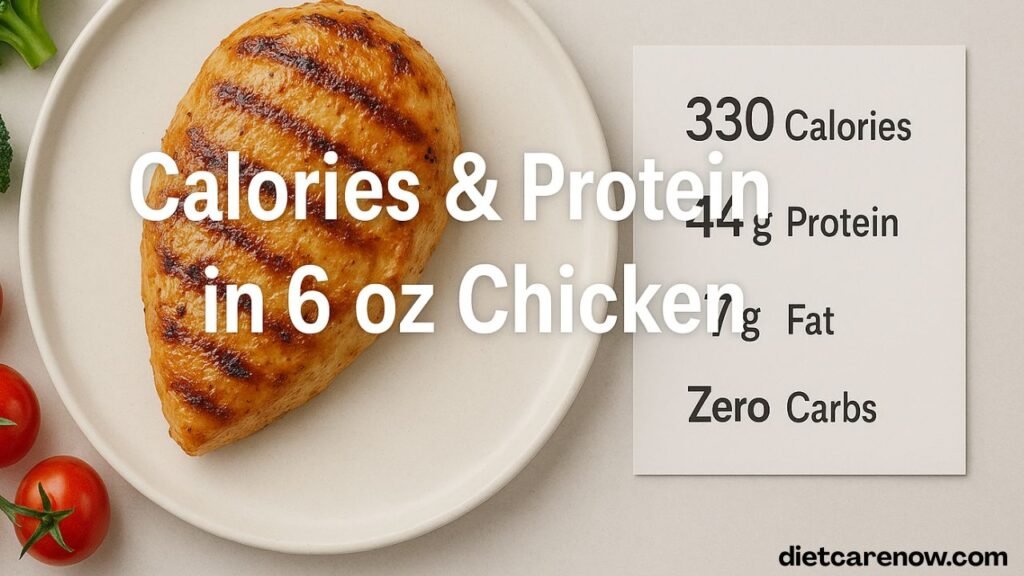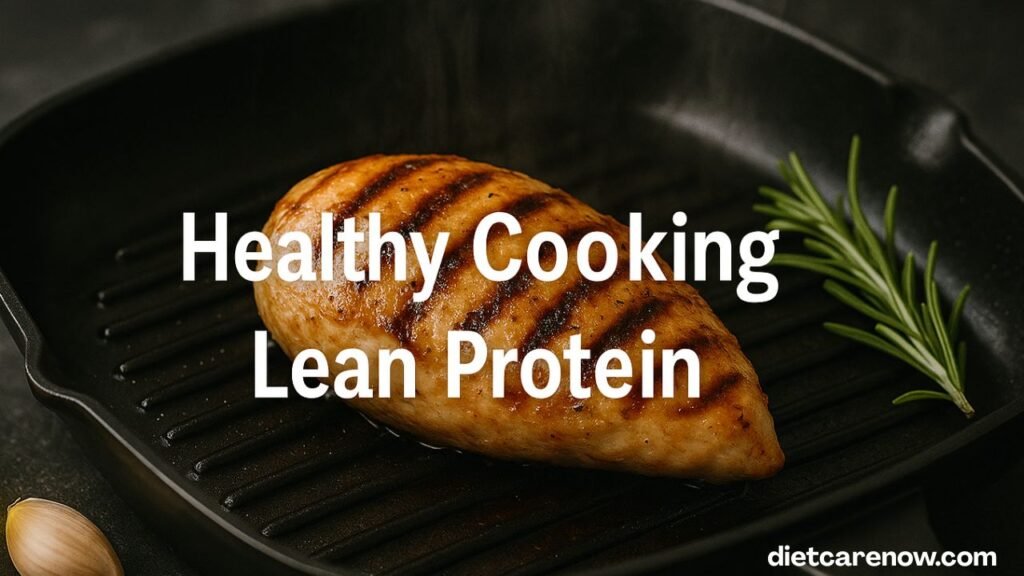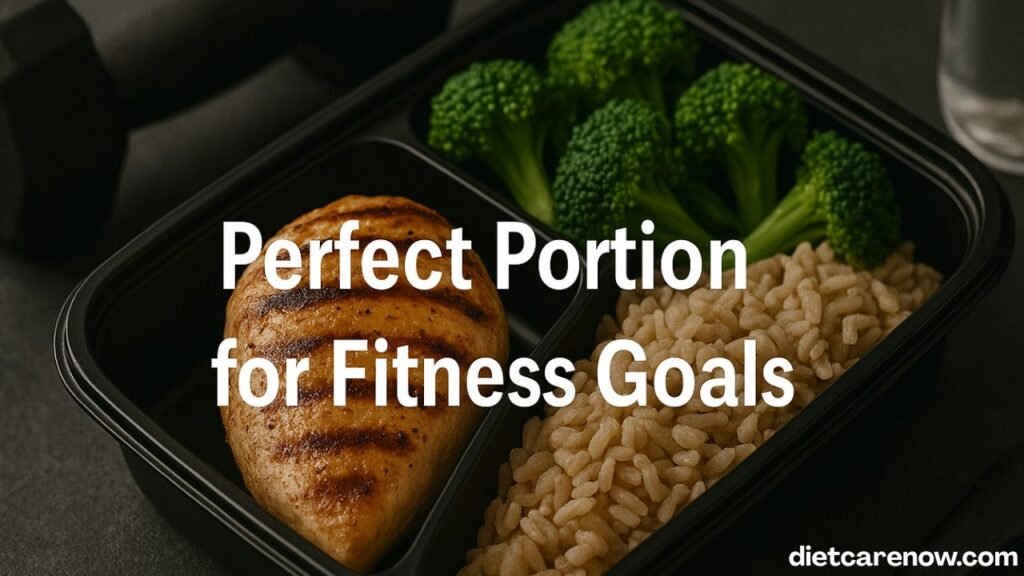Chicken is one of the most popular proteins in the world, and for good reason. It’s lean, versatile, budget-friendly, and fits into almost every type of diet—from weight loss to bodybuilding. Among all cuts, chicken breast takes the spotlight as the ultimate lean protein.
But here’s a question many health-conscious people ask: What exactly is the nutritional value of a 6 oz chicken breast?
This portion size is commonly used in meal prep, restaurant servings, and diet plans. Six ounces strikes a balance—it’s enough to fill you up, but not so much that it overloads your calorie goals. For athletes, dieters, or anyone focused on balanced eating, understanding this serving is crucial.
What Does a 6 oz Chicken Breast Look Like?
Visualizing portion sizes can be tricky.
- Palm rule: A 6 oz chicken breast is roughly the size of your palm or a deck of cards, though thickness varies.
- Raw vs cooked: Chicken loses water during cooking. A raw 6 oz breast will weigh about 4.5–5 oz once cooked.
- USDA guidelines: The USDA often recommends 3–4 oz as a serving, but many fitness enthusiasts double that to hit protein goals—making 6 oz a common standard.
Also read: /silk-yogurt/
Calories in a 6 oz Chicken Breast
Calories depend on whether the chicken is skinless and how it’s cooked.
- Raw, skinless, boneless: Around 186 calories.
- Cooked (grilled/baked, no skin): Roughly 276–280 calories.
- With skin: Calories can jump to 320–350, depending on cooking style.
Cooking impact:
- Grilled or baked keeps calories lower.
- Fried or breaded versions can double the calorie count, reaching 500–600 per serving.
Comparison:
- 6 oz chicken breast (280 calories, ~50g protein) vs 6 oz salmon (~360 calories, ~34g protein + healthy fats).
- Chicken gives more protein per calorie, which is why it’s often chosen for weight management.

Protein Content: The Lean Muscle Builder
Protein is the star of chicken breast.
- 6 oz cooked chicken breast: ~50–53 grams of protein.
- Why it matters: Protein repairs muscles, keeps you full longer, and boosts metabolism.
- Comparison:
- 6 oz beef sirloin: ~42g protein, but with more fat.
- 6 oz tofu: ~18g protein, but lower calorie density.
Athletes and dieters love chicken breast because it delivers maximum protein with minimal fat.
Fat Profile: Lean but Still Essential
Chicken breast is very low in fat compared to thighs or drumsticks.
- 6 oz skinless breast: ~3g total fat, <1g saturated.
- With skin: Jumps to ~8g fat, ~2g saturated.
Why it matters:
- The little fat it has includes omega-6 fatty acids, which are important in moderation.
- Keeping the skin off makes it one of the leanest proteins available.
Carbohydrates: Virtually Zero
Chicken breast is naturally carb-free.
- 6 oz serving: 0g carbs.
- Great for low-carb, keto, and diabetic-friendly diets.
- Best paired with healthy carb sources like brown rice, sweet potatoes, or quinoa for balance.
Vitamin Content in Chicken Breast
A 6 oz chicken breast isn’t just protein—it delivers key vitamins:
- Niacin (B3): Supports metabolism and energy.
- Vitamin B6: Helps with protein metabolism and brain health.
- Vitamin B12: Important for red blood cell formation (though higher in dark meat and beef).
A single serving of chicken breast can cover 30–50% of daily niacin and B6 needs.
Mineral Power: Iron, Zinc, Phosphorus & More
Chicken breast is also a great source of minerals:
- Phosphorus: ~300mg (essential for bones and teeth).
- Selenium: ~45 mcg (important antioxidant, nearly 100% of daily value).
- Zinc: Moderate amounts for immune health.
- Iron: ~1mg, less than red meat but still valuable.
Compared to beef, chicken has less iron but shines in selenium content.
Nutritional Comparison: 6 oz Chicken Breast vs Thighs & Drumsticks
- Protein: Breast (50g) vs Thigh (42g).
- Fat: Breast (3g) vs Thigh (8g+).
- Taste: Dark meat is juicier due to higher fat, but breast is leaner.
- Nutrition debate: Breast wins for low-calorie, high-protein diets. Thighs work better for those needing more fats and flavor.
Cooking Methods and Their Nutritional Impact
How you cook matters:
- Grilled: Best balance—low calorie, nutrient retention.
- Baked: Nearly identical to grilled, easy for meal prep.
- Fried: Adds significant fat and calories.
- With sauces or breading: Can double calorie count.
Tip: Use minimal oil, herbs, and spices for maximum nutrition.
6 oz Chicken Breast in Popular Diet Plans
- Weight loss: High protein, low calorie makes it perfect for calorie deficits.
- Keto: Zero carbs, protein-heavy, fits well with fatty sides like avocado.
- Paleo: Whole, unprocessed, nutrient-dense.
- High-protein diets: Ideal for athletes and bodybuilders.
Athletes and Fitness Enthusiasts: Why 6 oz Is a Standard Serving
- Protein target: Athletes often need 1–1.5g protein per pound of body weight.
- 6 oz chicken breast = ~50g protein, a convenient portion toward daily goals.
- Pre/post workout:
- Pair with rice for glycogen replenishment.
- Combine with vegetables for a lighter recovery meal.
This is why bodybuilders often meal prep chicken breast in bulk.

Potential Downsides to Eating Chicken Breast
Even with benefits, moderation matters.
- Overconsumption: Relying only on chicken can reduce dietary variety.
- Antibiotics/hormones: Choose organic or antibiotic-free chicken when possible.
- Cooking safety: Undercooked chicken risks salmonella. Always cook to 165°F (74°C).
Healthy Pairings with 6 oz Chicken Breast
Chicken breast shines when paired with balanced foods:
- Vegetables: Broccoli, spinach, zucchini for fiber and vitamins.
- Whole grains: Brown rice, quinoa, oats for energy.
- Healthy fats: Olive oil, avocado, nuts for satiety.
Balanced meal example (~550 calories):
- 6 oz grilled chicken breast (280 cal).
- 1 cup steamed broccoli (50 cal).
- ½ cup quinoa (110 cal).
- 1 tbsp olive oil drizzle (120 cal).

Conclusion: Why 6 oz Chicken Breast Is a Nutritional Powerhouse
A 6 oz chicken breast packs ~280 calories, 50g protein, and a wealth of vitamins and minerals—all while being nearly fat-free and carb-free.
It’s a go-to for weight loss, muscle gain, or simply maintaining a healthy diet. Whether you grill, bake, or sauté it, this portion delivers balance, convenience, and nutrition in every bite.

